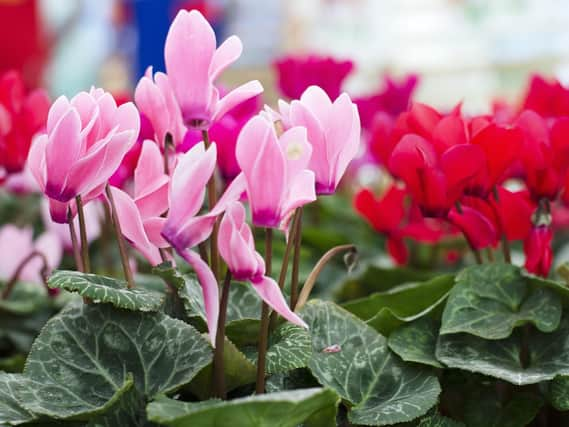BRIAN KIDD: The amazing life of plants and how to make them thrive


Several factors are essential to plant life. The first is light. Plants take energy from light and sunshine. Combine this with carbon dioxide from air and simple sugars are produced. These pass through the plant as they are soluble.
Plants convert this into starch which is stored at the base of stems and sometimes in the roots. When darkness falls the starch is turned back into sugar and passes to the leaf tips where it is consumed by the plant so it can grow. From this we learn plants grow at night.
Advertisement
Hide AdAdvertisement
Hide AdIf they're somewhere there's insufficient light they become too tall and the flowers are poor. So a good light place is essential in our homes. To keep the foliage well-balanced give the pot a quarter-turn every day.
Water is also essential. Plants absorb this through their roots and to a lesser extent through foliage. Water is passed, together with tiny traces of minerals from the compost, through the plant and escapes as a vapour from the pores on the leaves. This keeps the plant cells fresh, just like kidneys do in mammals.
The correct temperature varies from plant to plant but as a general rule, protection from frost is essential. Most indoor plants begin to feel comfortable at 7.2C (45F), but at 12.7C (55F), they are much happier.
We need to get all these conditions coordinated to be successful but it isn't always easy because at night rooms get cold because the heating is off. This on its own is not too bad. The trouble comes when plants are over-watered so they are then standing in the cold with wet feet. Would you like that? Over-watering is the best way to kill indoor plants.
Advertisement
Hide AdAdvertisement
Hide AdNow, what about that cyclamen?  Avoid fluctuating temperatures. It's better to grow it in a cool room with good light, not sunshine, and be mean with watering. Feel the top of the compost. If dry give it a drink for 30 minutes by placing the pot in a saucer containing rain water. In that time the compost will take up all it needs. Allow to drain before putting back in the living room.
A great favourite is the African violet which can bloom for nine months. If you're successful growing these lovely plants, you've already got the knack of watering correctly and have found they enjoy lots of light and thrive with extra light by being underneath a reading light during the evening.
Poinsettias thrive on dry compost. If the leaves begin to go yellow at the base, take them off and reduce watering, giving rain water only. If all the leaves fall, you will still have the lovely bract, but to make it look a little less nude, push some conifer sprays into the compost so the bare stems are covered; it looks wonderful and with a bit of luck no one will notice you have over-watered.
Â
THIS WEEK'S TOP TIP
Tar oil winter wash for fruit trees was withdrawn some time ago to be in line with the nanny state. But there are alternatives.
Look out for winter wash for fruit tress in an organic form, Growing Success is a name you may be familiar with. Keydell Nurseries at Horndean has some.
Â